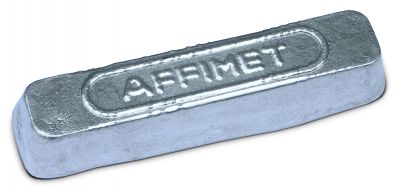
Lingot aluminium
By Romary (Own work) [GFDL (http://www.gnu.org/copyleft/fdl.html), CC-BY-SA-3.0 (http://creativecommons.org/licenses/by-sa/3.0/) or CC BY 2.5 (http://creativecommons.org/licenses/by/2.5)], via Wikimedia Commons
The amount of lightweight aluminium in new cars is increasing, but current methods to get rid of hydrogen gas (H2) bubbles that create porosities are expensive, inefficient and hazardous. Novel ultrasonic technology is headed to market to keep aluminium on the road.
Lightweight alloys play an important role in the design of new cars. In
conventional gas engines, lowering the weight reduces fuel consumption
and emissions. In new hybrid and electric cars, less weight to move
around means longer distances before recharging. However, H2 introduced
during the processing of aluminium alloys creates porosity that
negatively impacts the performance of cast parts.
The EU-funded project
DOSHORMAT (Degassing machine for aluminum casting process based on ultrasound) is up-scaling degassing technology developed within the previous Seventh Framework Programme (FP7) project ULTRAGASSING. The method was shown to efficiently degas aluminium alloys at laboratory and pilot scales. DOSHORMAT is now optimising it with an eye on mass production. The team is focusing on the relationships among ultrasonic degassing parameters, casting parameters and melt quality to develop a versatile method capable of being tailored to a specific casting process.
Scientists have now designed two prototypes for aluminium degassing, one for high-pressure die casting and gravity casting and another for low-pressure die casting. This required adaptation of the ULTRAGASSING concepts for commercial implementation considering all aspects, including manufacturing costs, safety regulations, efficiency and market potential. Preliminary tests of the machines in an industrial laboratory have been completed and feasibility studies are being used to investigate new machine configurations to address specific production aspects.
The presence of H2 in molten melt during the aluminium alloy casting process affects product quality and performance, and current degassing methods face several challenges. DOSHORMAT is preparing promising ultrasonic degassing technology for commercialisation. It will solve current problems and provide the solution to future environmental regulations as well.

